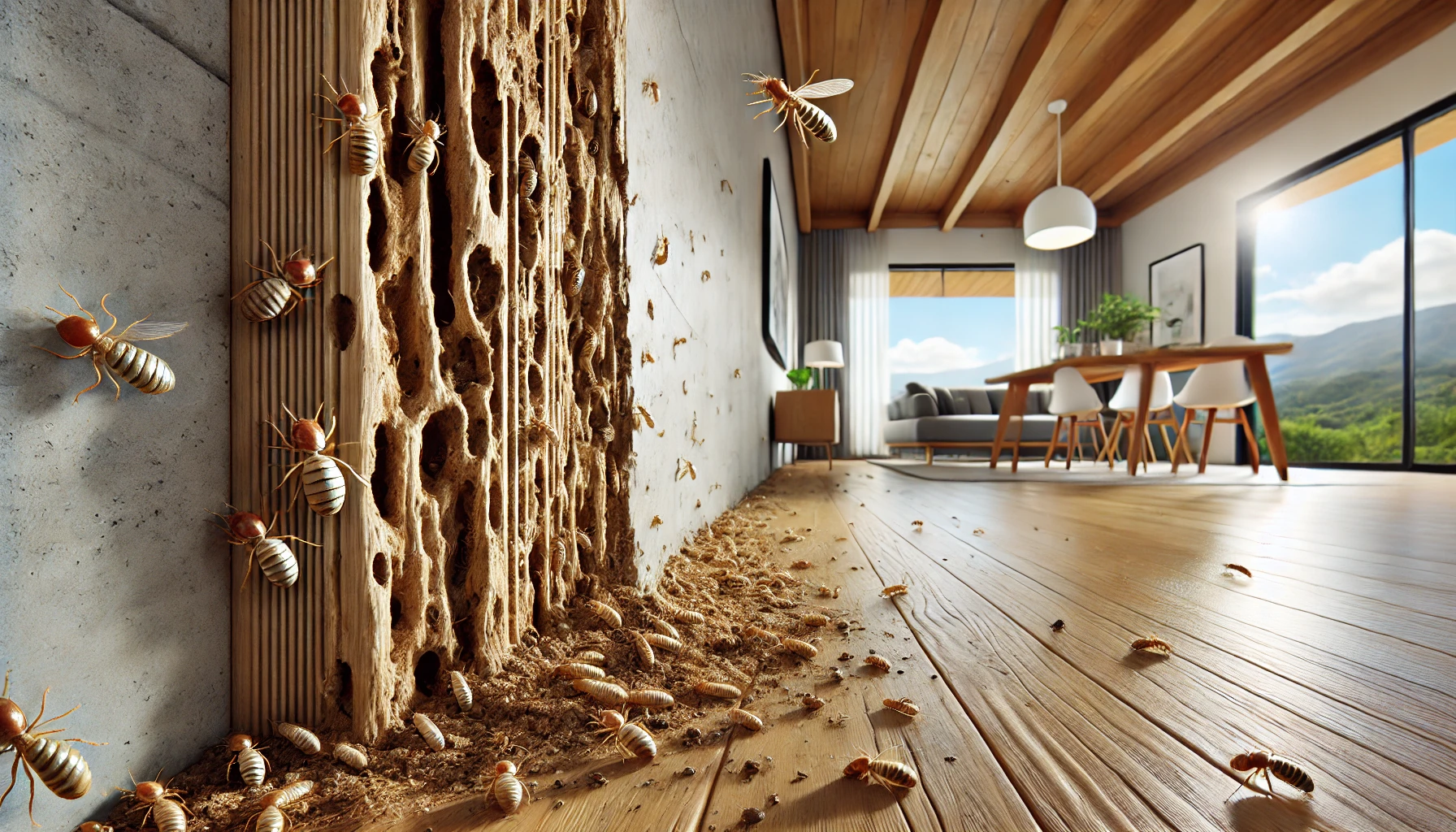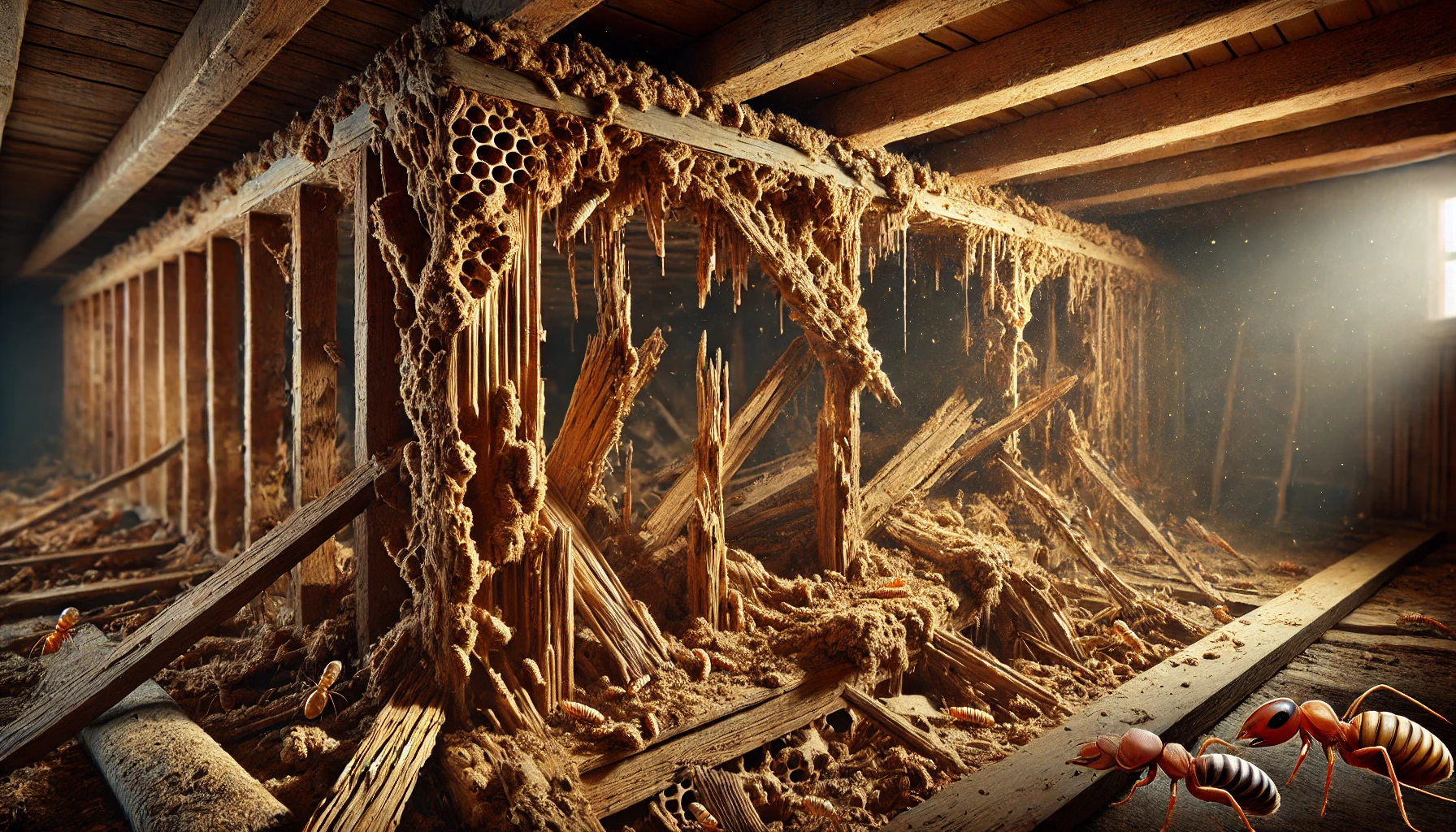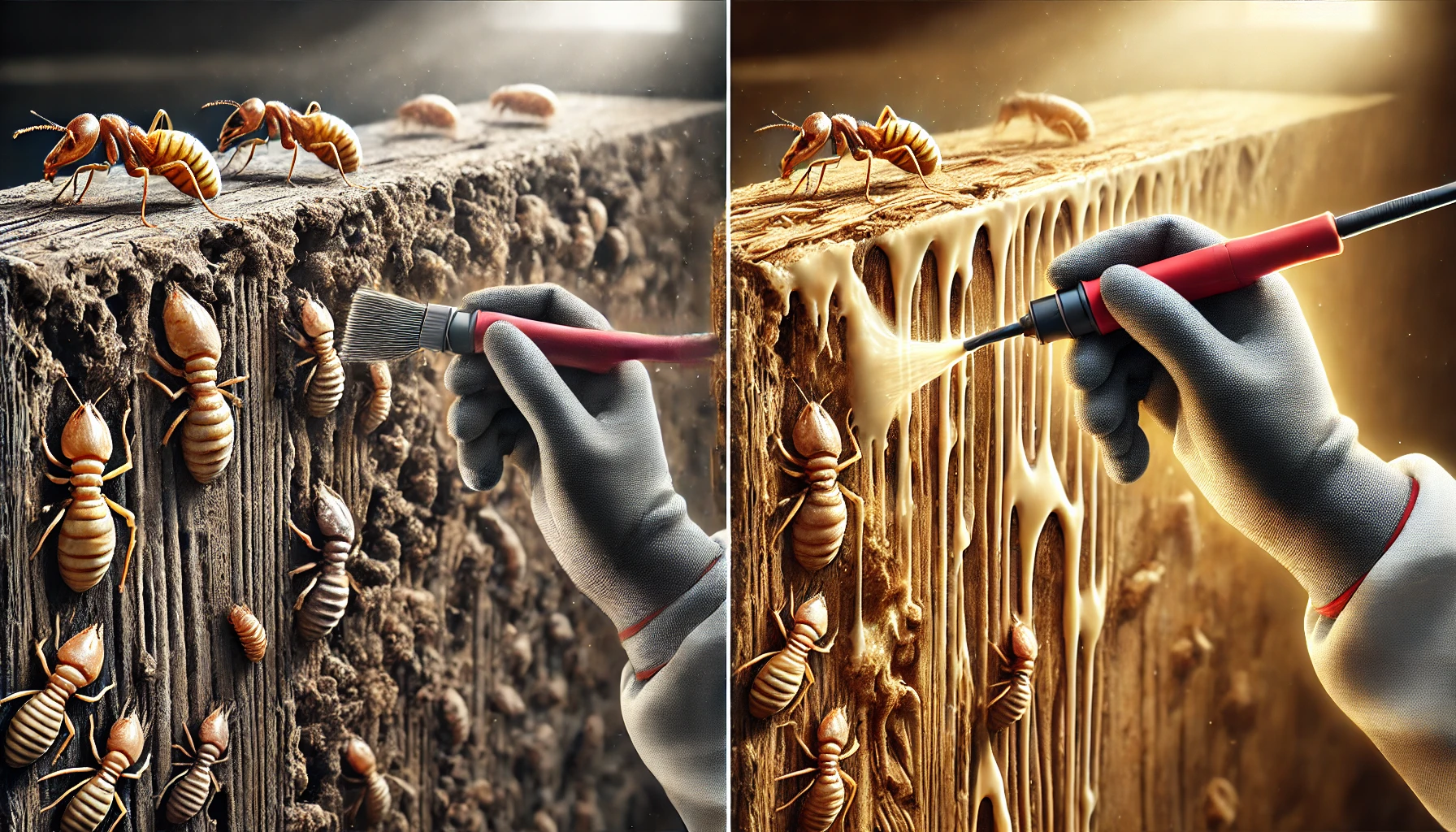Key Takeaways
- Timely action is essential to prevent extensive termite damage that could lead to expensive repairs.
- Before repairing any damage, ensure that the termite infestation is completely eradicated using methods such as liquid termiticides, baiting systems, or fumigation.
- Thoroughly assess the extent of the damage, including both visible and hidden damage, to determine whether cosmetic or structural repairs are needed.
- Minor surface repairs can be done with materials like wood filler and hardener, but structural damage may require professional assistance.
- Prevent future infestations by controlling moisture, conducting regular inspections, using termite-resistant materials, and maintaining the exterior of your home.
 Termites are small but incredibly destructive pests that can silently destroy your home’s wooden structure. Every year, termites cause billions of dollars in damage in the United States alone. As a homeowner, acting quickly is essential if you notice signs of termite activity or suspect an infestation. The damage caused by termites is often unseen for long periods, and by the time you see it, the problem could be extensive.
Left unnoticed, it can lead to severe structural damages, resulting in pricey repairs. This step-by-step guide will explain how to repair termite damage effectively while preventing future infestations.
Termites are small but incredibly destructive pests that can silently destroy your home’s wooden structure. Every year, termites cause billions of dollars in damage in the United States alone. As a homeowner, acting quickly is essential if you notice signs of termite activity or suspect an infestation. The damage caused by termites is often unseen for long periods, and by the time you see it, the problem could be extensive.
Left unnoticed, it can lead to severe structural damages, resulting in pricey repairs. This step-by-step guide will explain how to repair termite damage effectively while preventing future infestations.
Step 1: Confirm and Eliminate the Termite Infestation
Ensure the termites are entirely eradicated before starting any repairs. If the infestation is still active, any repairs you make could be damaged again, and the termites will continue to wreak havoc on your property. Professional Termite Inspection : The first step in handling termite infestations is conducting a thorough inspection. Termites often hide in the walls, attic, or basement, making it difficult for homeowners to detect them. A pest control professional will have the knowledge and tools to identify all the affected areas, even those hidden.Termite Treatment Methods
-
Liquid Termiticides: This involves applying a chemical barrier around the perimeter of your home to prevent termites from entering. The termiticides may be applied around the foundation or injected directly into the soil.
-
Baiting Systems: Bait stations attract termites and provide a poison they take back to their colonies. Over time, this can eradicate the entire colony.
-
Fumigation: This is typically used for severe infestations. It involves covering the whole house with a gas that kills termites in all stages of their life cycle.


Not getting a solution?
Get your free pest control estimate today!Step 2: Assess the Extent of the Damage
Once the termites have been dealt with, the next step is to assess the extent of the damage. Not all termite damage is visible on the surface, so it’s essential to be thorough in your inspection.What to Check for Termite Damage
-
Wood Damage: One of the most obvious signs of termite damage is wood that appears hollow or spongy. This is because termites feed on wood from the inside, leaving the exterior intact but weakening the structure.
-
Structural Integrity: Termites commonly target load-bearing beams, joists, and columns, which can cause sagging or warping over time. This can compromise the stability of your home and may require immediate attention.
-
Cosmetic Issues: Besides structural damage, termites can cause cosmetic issues like cracks in walls, small holes in trim, or discoloration due to moisture exposure.
Step 3: Repair Surface-Level Damage
You can perform simple repairs yourself on minor damage, such as small holes or cracks. However, if the damage is more extensive, you may need to hire a professional. Materials Needed:- Wood filler
- Wood hardener
- Sandpaper
- Paint or stain
Steps to Repair Termite Damage
-
Apply Wood Hardener: If the wood has softened due to termite activity, apply a wood hardener. This will strengthen the wood and prevent it from further degradation.
-
Fill Holes: Use a wood filler to patch up any small holes or cracks caused by the termites. Apply the filler with a putty knife, smoothing it out to ensure it blends well with the rest of the wood.
-
Sand and Smooth: After the filler has dried, sand the area to ensure a smooth finish. Be sure the patched area is level with the surrounding woodwork.
-
Paint or Stain: To match the repaired area with the rest of your home’s woodwork, apply a paint or stain. If you’re unsure about the right color, try to match the existing finish as closely as possible.

Step 4: Address Structural Damage
When termite damage affects major structural elements like beams, joists, or support columns, the repairs become more complicated. While some homeowners may be able to perform these repairs themselves, it’s often advisable to hire a contractor for major structural work.Steps to Repair Termite Damage
-
Remove Damaged Wood: Begin by cutting out any damaged sections of wood that are no longer structurally sound. This may require a saw or other tools to remove compromised beams or columns.
-
Replace with Treated Lumber: Use pressure-treated lumber, which is resistant to termites, for the replacement wood. You can also opt for metal or other termite-resistant materials to ensure that your home stays protected.
-
Reinforce Weakened Areas: For additional stability, you may need to add support beams or “sister” new joists alongside the existing ones. This will ensure that the structure remains strong and secure.
-
Ensure Proper Alignment: After replacing the damaged wood, ensure that everything is aligned correctly. Use a level to ensure the replacement beams and joists are aligned correctly to maintain the structural integrity of your home.
Step 5: Prevent Future Infestations
After successfully repairing termite damage, it’s time to think about preventing future infestations. Preventing termites from returning is as important as fixing the damage caused by the initial infestation.Termites Prevention Tips
-
Control Moisture: Termites thrive in moist environments, so controlling moisture levels around your home is crucial. Fix any leaks, ensure proper drainage around the foundation, and maintain good ventilation in crawl spaces and attics.
-
Regular Inspections: Schedule annual pest inspections to catch infestations early. This can help detect problems before they escalate into major damage.
-
Use Termite-Resistant Materials: When constructing or renovating, use termite-resistant materials such as treated wood or metal in areas vulnerable to infestation.
-
Install Barriers or Baiting Systems: Consider installing termite barriers around your home or using baiting systems as an additional precaution to deter termites from entering.
-
Maintain the Exterior: Keep woodpiles, mulch, and other organic materials away from the exterior of your home, as they can attract termites.
 Tip: A proactive approach to termite prevention is far less expensive and time-consuming than dealing with a full-blown infestation. Taking the necessary precautions now can save you from future headaches.
If you feel things have gone out of control, it is advised to contact pest control professionals. Our team can provide a customized approach to protect your home effectively.
Tip: A proactive approach to termite prevention is far less expensive and time-consuming than dealing with a full-blown infestation. Taking the necessary precautions now can save you from future headaches.
If you feel things have gone out of control, it is advised to contact pest control professionals. Our team can provide a customized approach to protect your home effectively.
Visit our Species, Control, and DIY Guide sections for additional resources on termite and ways to tackle a termite infestation.





